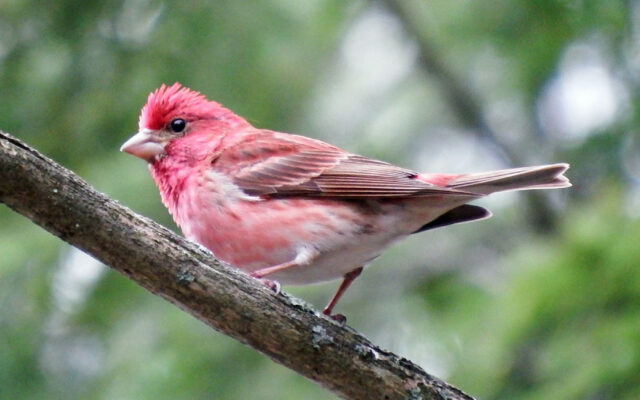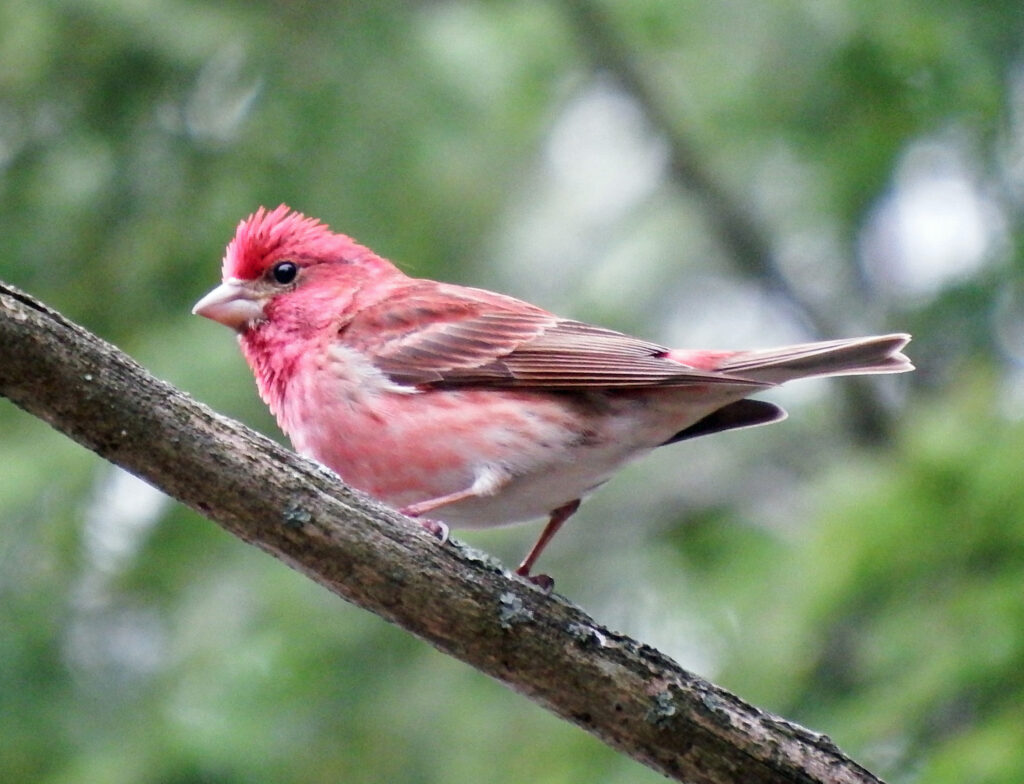
Counting birds in Maine this winter will help track the effects of climate change
By Bob Duchesne
The calendar says Dec. 21 is the first official day of winter, but my winter started on Tuesday, Dec. 14. That was the first official day of this season’s winter bird atlas.
The Maine Bird Atlas is a five-year project managed by the Maine Department of Inland Fisheries and Wildlife. A quick recap is in order.
Every two or three decades, many states document where all of their birds are. Birds are very picky about where they want to be. Each species is adapted to specific habitats, determined by food and breeding requirements.
Habitats change over time. Fields regenerate to forest. Beavers create freshwater wetlands. Sea level rise alters saltwater marshes. Climate change modifies weather.

PURPLE FINCH – The purple finch is among the birds that usually stick around in Maine during the winter months.
Habitats change gradually, almost imperceptibly. Tracking the change is hard. But birds are relatively easy to track. They’re colorful and noisy, and there are hundreds of different species.
By comparing species distribution maps 20 years apart, biologists can get a pretty good picture of how the earth is changing right under our noses.
To date, 4,334 volunteers have collected nearly five million breeding bird records across the state during the last four summers. Maine is producing a winter atlas, too.
While most of our summer birds go south this time of year, many Canadian birds consider Maine to be “south,” and come here. How these northern-breeding species use our state in winter informs wildlife biologists about the health of our forests and other ecosystems.
Furthermore, climate change is pushing southern birds north. It’s equally important to understand how climate affects their winter distribution patterns.
Since the atlas is all about habitat assessment, the survey needs to occur when birds aren’t moving around in migration. By mid-December, it’s pretty certain that any bird planning to migrate already has.
It’s safe to assume that any birds remaining in the state plan to stay here a while. Hence, Dec. 14 was designated as this year’s date to begin the winter count.
Over the last three winters, volunteers have logged 58,174 hours in the field. I’d estimate that half of those hours were mine. That might be a slight exaggeration, but I spent much of last winter frost-biting my derriere.
And loving every minute. I walked miles of roads in the woods, taking note of every chickadee, nuthatch and woodpecker I encountered. Many participants scour their neighborhoods, parks and various spots near home. I like to get away from it all, and commune with nature where only the moose and logging trucks go. Is that weird?
To be honest, last winter was a bore. I don’t remember a winter when so many of our own local birds fled the state. Some winters, the woods are full of finches. Purple finches usually hang around, but not last winter.
White-winged and red crossbills are abundant some years, totally gone in others. Last winter, they were totally gone. Pine siskins disappeared. Even many of our blue jays and red-breasted nuthatches skedaddled south, looking for warmer, greener pastures. Not many pine grosbeaks came down from Canada.
It didn’t matter. I still had great walks in the woods, punctuated by visits with all my chickadee, kinglet and raven friends. The truth is, anybody can volunteer, and now’s a good time to start. Even people who do no more than watch the backyard feeders can contribute to science.
There are procedures, of course, and providing the details would exhaust this entire column. Complete information can be found at maine.gov/ifw/fish-wildlife/maine-bird-atlas/index.html, but truthfully, complete information is too much information.
Much of the website is about the summer nesting season. Winter is much simpler. It involves counting species you already know, even if you only know a handful. It’s best to just dive in and ask questions as needed.
For now, it’s enough to know that birds tell a story. Even the birds at backyard feeders are telling us something about the health of the forest upon which Maine’s economy depends.
There are still seven dark-eyed juncos lingering in my yard this winter. This time last year, there were none. What are they trying to tell me about this year’s season? I’m listening.
And walking. Last year, I walked the Stud Mill Road from Milford halfway to Princeton. I’ll walk the other half this winter. I walked miles of logging roads around Moosehead Lake and Jackman.
If you’re driving on any of those deep-woods roads this winter, and you see somebody waddling along in heavy clothes, carrying binoculars and probably a camera, you might think he’s crazy. You’d be right.